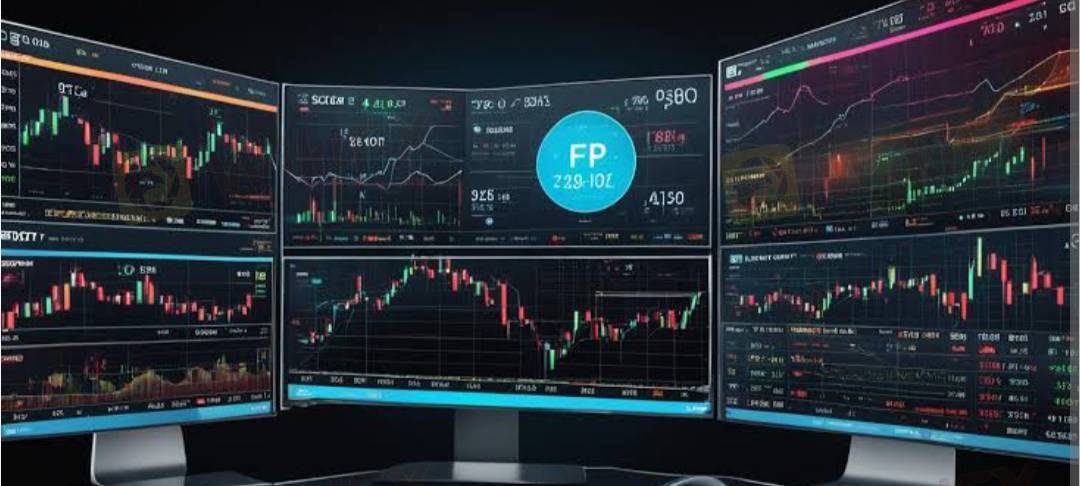
2025-02-26 17:13
IndustryAI-driven liquidity risk assessment for forex t
#AITradingAffectsForex
AI-driven liquidity risk assessment in forex trading involves using advanced machine learning and data analytics tools to evaluate and manage risks related to liquidity. In forex markets, liquidity risk refers to the difficulty of executing large trades without significantly affecting the price, especially in periods of high volatility or low market depth. AI can help traders assess this risk in real time and make more informed trading decisions. Here's how AI-driven liquidity risk assessment works for forex traders:
1. Real-Time Data Collection:
AI systems collect and analyze a wide variety of real-time data to assess liquidity risk:
Order Book Data: The AI monitors the depth of the order book (levels of buy and sell orders) to gauge the market's ability to absorb large trades without causing significant price movements.
Bid-Ask Spread: A widening spread may signal lower liquidity, as it indicates less interest in buying and selling at close prices.
Volume and Transaction Data: AI tracks trading volume and transaction sizes to understand how active the market is and whether liquidity is sufficient.
Price Movements and Volatility: Significant price movements or sudden spikes in volatility can indicate a liquidity squeeze, where larger trades become harder to execute without significant slippage.
2. Sentiment Analysis:
AI utilizes sentiment analysis to gauge the overall mood of the market. By analyzing:
News Sources: AI scans news articles, financial reports, and social media for mentions of relevant events (such as central bank decisions, geopolitical developments, or economic releases) that might affect market liquidity.
Market Sentiment: AI assesses how traders are reacting to news or events, which can impact liquidity. For instance, if a major news event triggers uncertainty, liquidity can dry up as market participants may pull back.
3. Machine Learning Models for Predicting Liquidity:
AI uses machine learning models to identify patterns and make predictions about future liquidity conditions:
Supervised Learning: Historical liquidity data can be used to train machine learning models, allowing the system to recognize factors that precede liquidity shifts. For example, a model can be trained to predict liquidity drops based on past market behavior during similar conditions.
Reinforcement Learning: In a dynamic market, reinforcement learning algorithms can adapt in real-time. The system continually learns from market conditions, adjusting liquidity risk predictions based on recent trends and outcomes.
Time-Series Analysis: AI systems use models like LSTM (Long Short-Term Memory) networks to analyze historical price, volume, and liquidity data in time-series formats. This enables AI to predict short-term liquidity shifts more accurately.
4. Risk Models and Liquidity Stress Testing:
AI-driven liquidity risk assessments involve simulating different market conditions to predict how liquidity might behave under stress:
Liquidity Stress Tests: AI simulates scenarios where liquidity could be impaired, such as during a sudden market shock or a period of high volatility. This helps traders understand potential risks and plan strategies for dealing with them.
Liquidity Shortfall Detection: AI can detect situations where the market may experience a liquidity shortfall. For example, if a large player starts selling a currency pair and no buyers are available at current price levels, the AI model may predict potential slippage or price slippage risk.
5. Predictive Modeling for Slippage:
AI models can estimate the potential slippage of an order
Like 0
FX7759065982
Trader
Hot content
Industry
Event-A comment a day,Keep rewards worthy up to$27
Industry
Nigeria Event Giveaway-Win₦5000 Mobilephone Credit
Industry
Nigeria Event Giveaway-Win ₦2500 MobilePhoneCredit
Industry
South Africa Event-Come&Win 240ZAR Phone Credit
Industry
Nigeria Event-Discuss Forex&Win2500NGN PhoneCredit
Industry
[Nigeria Event]Discuss&win 2500 Naira Phone Credit
Forum category

Platform

Exhibition

Agent

Recruitment

EA

Industry

Market

Index
AI-driven liquidity risk assessment for forex t
 India | 2025-02-26 17:13
India | 2025-02-26 17:13#AITradingAffectsForex
AI-driven liquidity risk assessment in forex trading involves using advanced machine learning and data analytics tools to evaluate and manage risks related to liquidity. In forex markets, liquidity risk refers to the difficulty of executing large trades without significantly affecting the price, especially in periods of high volatility or low market depth. AI can help traders assess this risk in real time and make more informed trading decisions. Here's how AI-driven liquidity risk assessment works for forex traders:
1. Real-Time Data Collection:
AI systems collect and analyze a wide variety of real-time data to assess liquidity risk:
Order Book Data: The AI monitors the depth of the order book (levels of buy and sell orders) to gauge the market's ability to absorb large trades without causing significant price movements.
Bid-Ask Spread: A widening spread may signal lower liquidity, as it indicates less interest in buying and selling at close prices.
Volume and Transaction Data: AI tracks trading volume and transaction sizes to understand how active the market is and whether liquidity is sufficient.
Price Movements and Volatility: Significant price movements or sudden spikes in volatility can indicate a liquidity squeeze, where larger trades become harder to execute without significant slippage.
2. Sentiment Analysis:
AI utilizes sentiment analysis to gauge the overall mood of the market. By analyzing:
News Sources: AI scans news articles, financial reports, and social media for mentions of relevant events (such as central bank decisions, geopolitical developments, or economic releases) that might affect market liquidity.
Market Sentiment: AI assesses how traders are reacting to news or events, which can impact liquidity. For instance, if a major news event triggers uncertainty, liquidity can dry up as market participants may pull back.
3. Machine Learning Models for Predicting Liquidity:
AI uses machine learning models to identify patterns and make predictions about future liquidity conditions:
Supervised Learning: Historical liquidity data can be used to train machine learning models, allowing the system to recognize factors that precede liquidity shifts. For example, a model can be trained to predict liquidity drops based on past market behavior during similar conditions.
Reinforcement Learning: In a dynamic market, reinforcement learning algorithms can adapt in real-time. The system continually learns from market conditions, adjusting liquidity risk predictions based on recent trends and outcomes.
Time-Series Analysis: AI systems use models like LSTM (Long Short-Term Memory) networks to analyze historical price, volume, and liquidity data in time-series formats. This enables AI to predict short-term liquidity shifts more accurately.
4. Risk Models and Liquidity Stress Testing:
AI-driven liquidity risk assessments involve simulating different market conditions to predict how liquidity might behave under stress:
Liquidity Stress Tests: AI simulates scenarios where liquidity could be impaired, such as during a sudden market shock or a period of high volatility. This helps traders understand potential risks and plan strategies for dealing with them.
Liquidity Shortfall Detection: AI can detect situations where the market may experience a liquidity shortfall. For example, if a large player starts selling a currency pair and no buyers are available at current price levels, the AI model may predict potential slippage or price slippage risk.
5. Predictive Modeling for Slippage:
AI models can estimate the potential slippage of an order
Like 0
I want to comment, too
Submit
0Comments

There is no comment yet. Make the first one.

Submit
There is no comment yet. Make the first one.